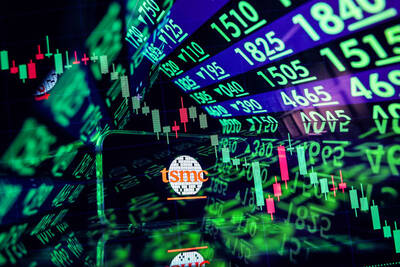China is "more than 90 percent certain" to adopt Japan's bullet-train technology to build a new multi-billion dollar high-speed rail line between Beijing and Shanghai, state press reported yesterday.
Although Transrapid International, a consortium comprising German industrial engineers ThyssenKrupp AG and Siemens AG, has not yet given up hope that China would adopt its magnetic levitation or Maglev train, its prospects look dim, the Economic Observer said, citing the Ministry of Railways.
Earlier this month, German media reported that China was unlikely to proceed with its plan to build the 1,300km line based on the German space-age technology.
A senior member of the Siemens' management team said that it had received "clear signals that the decision will be taken in favor of the traditional train technology."
Hopes had been high after Shanghai installed the 430km per hour Maglev for commercial use on a line between the city's Pudong airport and downtown.
Following its successful test run earlier this year, former Chinese premier Zhu Rongji (朱隆基) said China would build a second "maglev" line from Shanghai to the eastern city of Hangzhou in Zhejiang province.
It was expected that Beijing-Shanghai may follow suit.
However, competition has been fierce, with France's TGV and Japan's Shinkansen bullet train vying for a contract worth an estimated US$12 billion as well as other proposals to connect major cities in China by high-speed rail.
Japan's Transport Minister Chikage Ogi said last week she wants to visit China to promote Japan's bullet train.

Taiwan Semiconductor Manufacturing Co (TSMC, 台積電) last week recorded an increase in the number of shareholders to the highest in almost eight months, despite its share price falling 3.38 percent from the previous week, Taiwan Stock Exchange data released on Saturday showed. As of Friday, TSMC had 1.88 million shareholders, the most since the week of April 25 and an increase of 31,870 from the previous week, the data showed. The number of shareholders jumped despite a drop of NT$50 (US$1.59), or 3.38 percent, in TSMC’s share price from a week earlier to NT$1,430, as investors took profits from their earlier gains

In a high-security Shenzhen laboratory, Chinese scientists have built what Washington has spent years trying to prevent: a prototype of a machine capable of producing the cutting-edge semiconductor chips that power artificial intelligence (AI), smartphones and weapons central to Western military dominance, Reuters has learned. Completed early this year and undergoing testing, the prototype fills nearly an entire factory floor. It was built by a team of former engineers from Dutch semiconductor giant ASML who reverse-engineered the company’s extreme ultraviolet lithography (EUV) machines, according to two people with knowledge of the project. EUV machines sit at the heart of a technological Cold

Taiwan’s long-term economic competitiveness will hinge not only on national champions like Taiwan Semiconductor Manufacturing Co. (TSMC, 台積電) but also on the widespread adoption of artificial intelligence (AI) and other emerging technologies, a US-based scholar has said. At a lecture in Taipei on Tuesday, Jeffrey Ding, assistant professor of political science at the George Washington University and author of "Technology and the Rise of Great Powers," argued that historical experience shows that general-purpose technologies (GPTs) — such as electricity, computers and now AI — shape long-term economic advantages through their diffusion across the broader economy. "What really matters is not who pioneers

TAIWAN VALUE CHAIN: Foxtron is to fully own Luxgen following the transaction and it plans to launch a new electric model, the Foxtron Bria, in Taiwan next year Yulon Motor Co (裕隆汽車) yesterday said that its board of directors approved the disposal of its electric vehicle (EV) unit, Luxgen Motor Co (納智捷汽車), to Foxtron Vehicle Technologies Co (鴻華先進) for NT$787.6 million (US$24.98 million). Foxtron, a half-half joint venture between Yulon affiliate Hua-Chuang Automobile Information Technical Center Co (華創車電) and Hon Hai Precision Industry Co (鴻海精密), expects to wrap up the deal in the first quarter of next year. Foxtron would fully own Luxgen following the transaction, including five car distributing companies, outlets and all employees. The deal is subject to the approval of the Fair Trade Commission, Foxtron said. “Foxtron will be